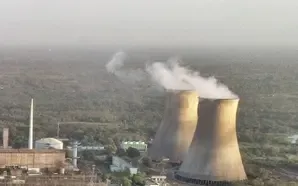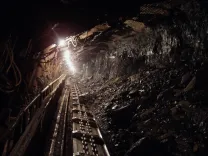Nuclear Energy Costs in Australia Exceed Renewables by Double: New Findings

Canberra, Dec 9 (NationPress) Renewable energy sources are confirmed to be a more economical choice for electricity generation in Australia than nuclear reactors, according to an annual report released by the national science agency.
A draft version of the 2024-25 GenCost report, made public on Monday by the Commonwealth Scientific and Industrial Research Organisation (CSIRO) and the Australian Energy Market Operator (AEMO), identified that solar and wind energy, supported by storage and transmission, represent Australia's most affordable electricity generation option, as detailed by the Xinhua news agency.
The findings challenge assertions made by the Coalition, the federal Opposition party, which claimed that the extended operational lifespan of nuclear power plants would render them less expensive than renewable energy.
Coalition leader Peter Dutton has vowed to remove Australia's prohibition on nuclear energy to establish seven small modular reactors (SMRs) at current coal plant locations if he ascends to the position of Prime Minister. In contrast, the incumbent Prime Minister Anthony Albanese's Labour Party has pledged to pursue a future solely reliant on renewable sources.
Dutton stated that the first of the SMRs could be up and running by either 2035 or 2037. He has not disclosed the projected costs associated with this initiative but has promised to provide this information shortly.
The GenCost report determined that a nuclear SMR could incur costs of up to 222 Australian dollars ($141.9) per megawatt hour (MWh) over a 60-year period.
In comparison, the report indicated that a 60-year solar project would produce electricity at a peak cost of 68 AUD ($43.4) per MWh, even when factoring in the expense of a complete rebuild after 30 years. A 50-year wind farm, accounting for a rebuild after 25 years, would cost up to 108 AUD ($69) per MWh.
Furthermore, the report concluded that the timeline for developing a nuclear reactor in Australia would take a minimum of 15 years.
Paul Graham, the Chief Energy Economist at CSIRO and the lead author of the report, stated that there is no distinct cost benefit associated with nuclear technology.
"Similar cost savings can be realized with shorter-lived technologies, including renewables, even when considering the need for their reconstruction," he remarked.
"The absence of a financial advantage stems from the considerable re-investment costs necessary to maintain long-term operational viability in nuclear energy."
The 2023-24 GenCost report anticipated that constructing a large-scale nuclear facility in Australia could exceed 17 billion AUD ($10.8 billion).









